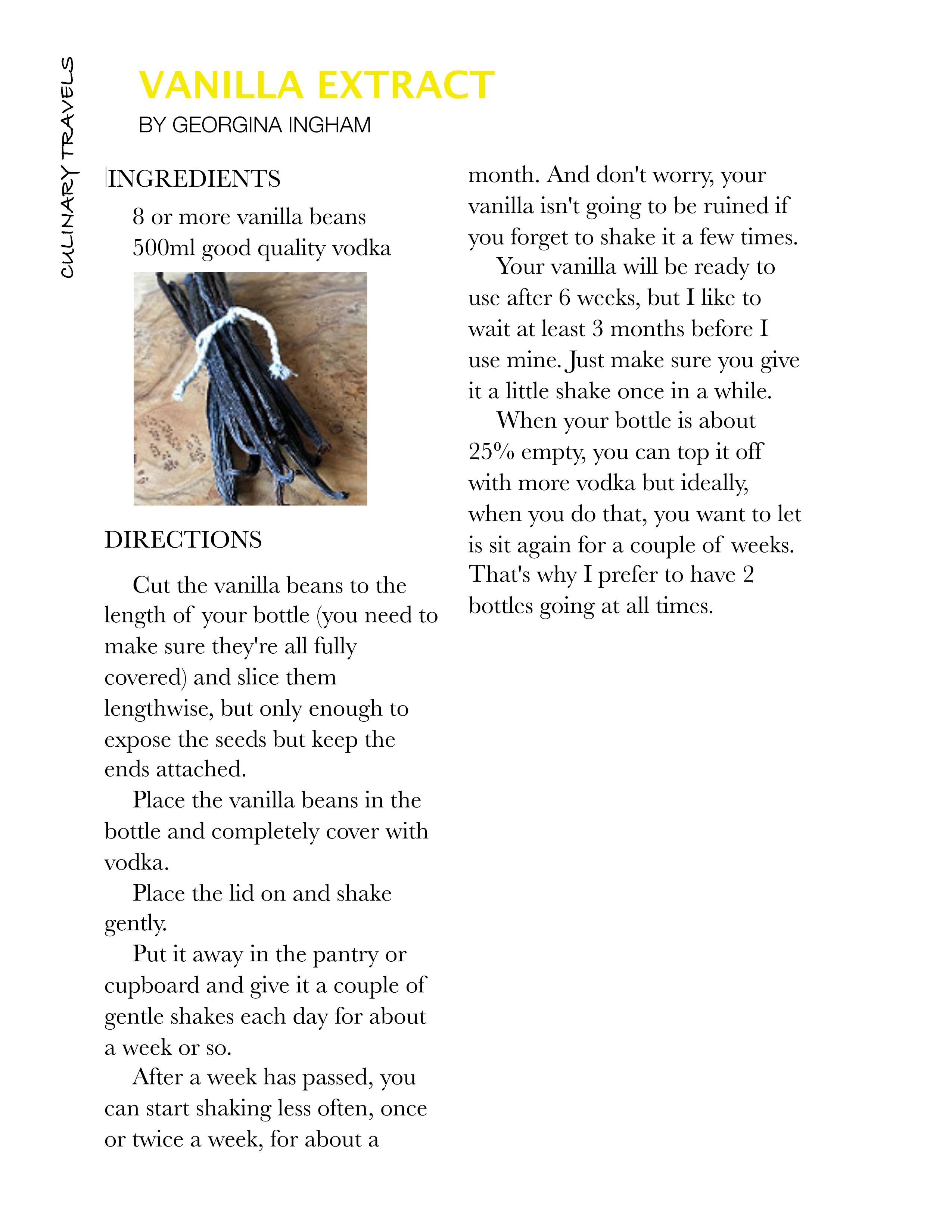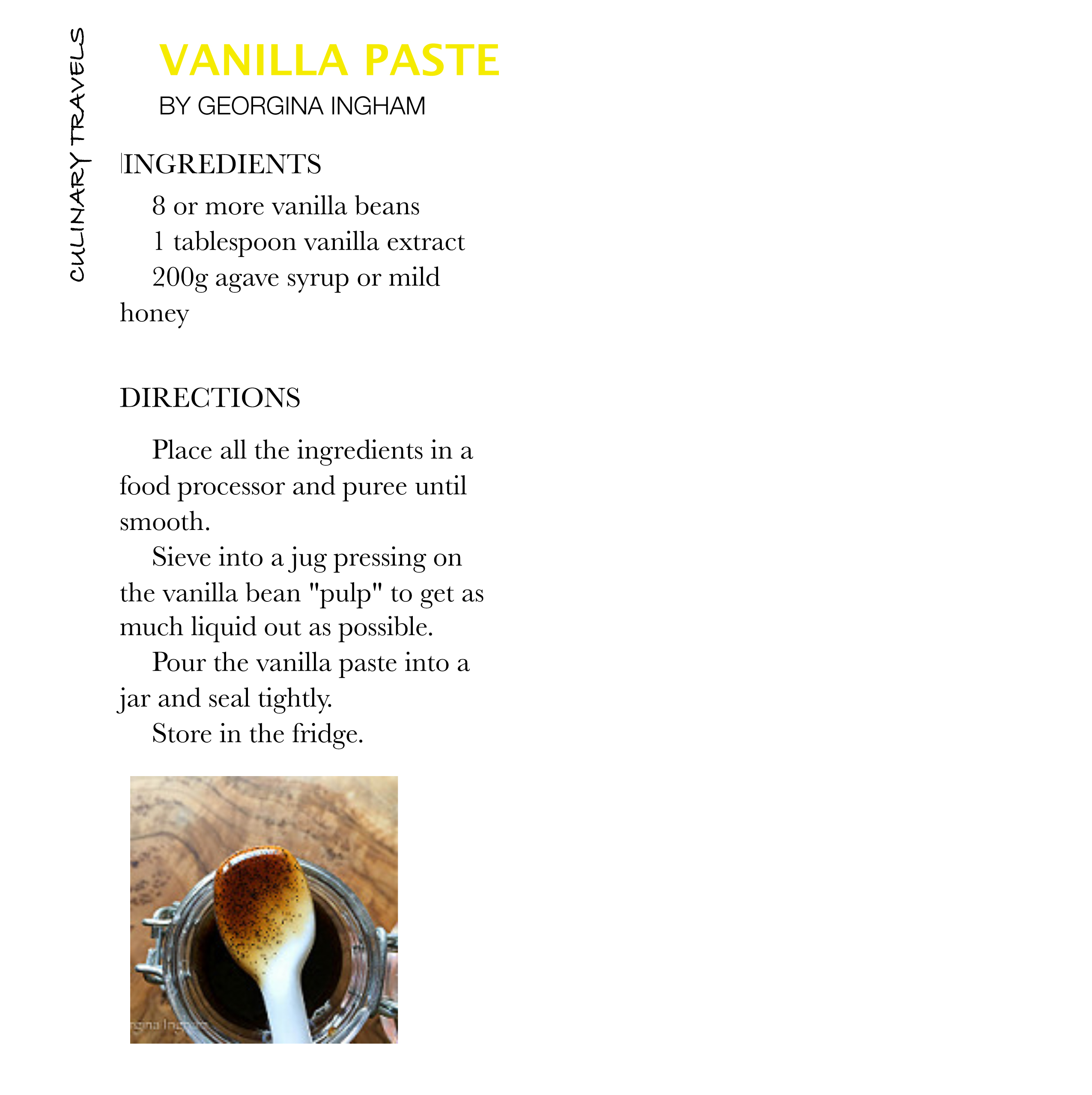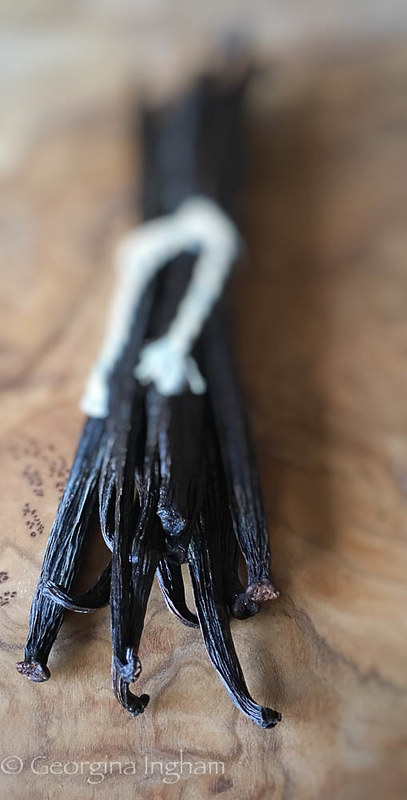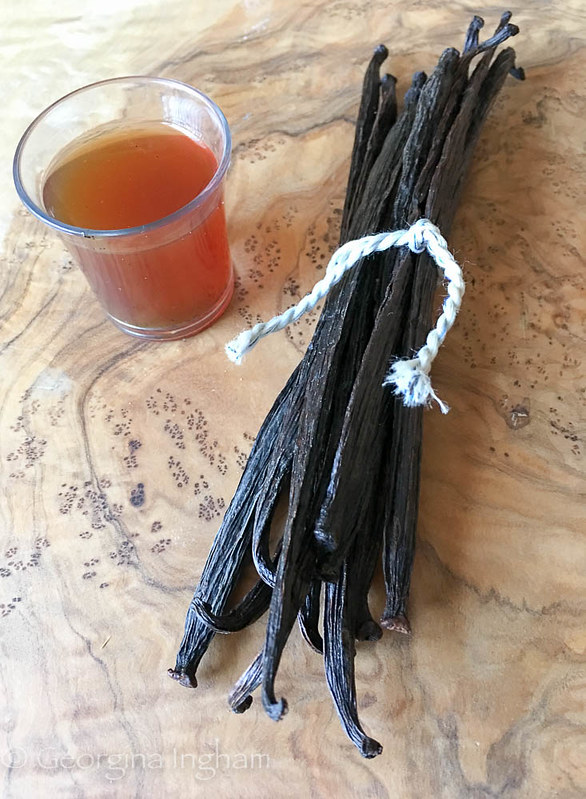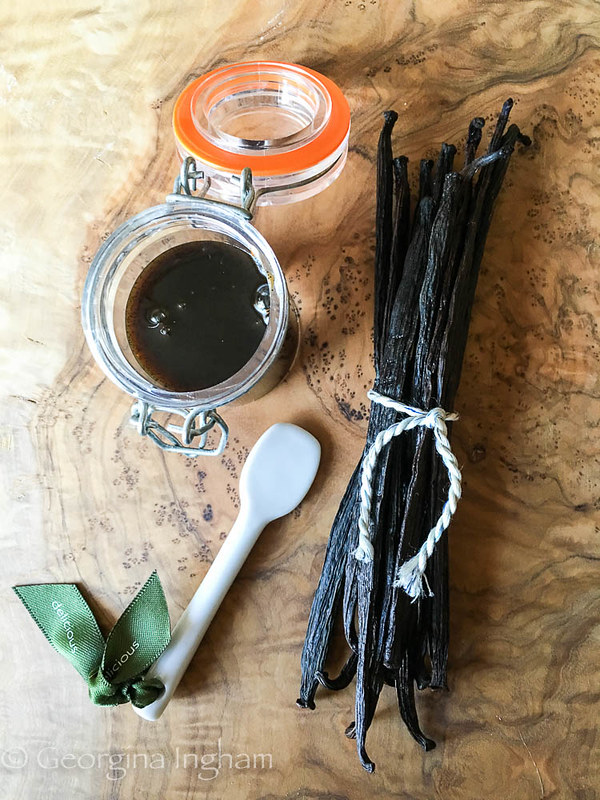Recipes Index
Homemade Vanilla Paste
Vanilla is one of the most popular flavourings worldwide for confectionary and other sweet foods and it is not difficult to see why. It tastes of childhood – cakes, ice creams, blancmange and the like, memory evoking classics that the lovely Nigella Lawson would often refer to as ‘nursery food’. Many of us remain vanilla lovers forever, rejecting the more experimental flavour combinations altogether – don’t we all know someone who only likes vanilla ice cream? Often though vanilla is a hidden component as it works so well as a background flavour that enhances the other key ingredients in the bake. Can you imagine a Victoria Sponge without vanilla? No, I think not.
Vanilla is an orchid whose seed pods are fermented and cured to produce the flavouring. It is native to Mexico but is now grown in Tahiti, Madagascar and Indonesia. Madagascan vanilla is probably the one most of us are familiar with but each countries varieties are slightly different and definitely worth seeking out.
The Incas used vanilla to flavour chocolate and that was its exclusive culinary role until Hugh Morgan, Queen Elizabeth I’s apothecary, began to advocate its wider use and Queen Elizabeth I is repute to have had a taste for it in puddings towards the end of her life.
Of course it still is used in the manufacture of chocolate but it also has a much more varied role in the kitchen. Vanilla, for example, remains the world’s most popular flavour of ice cream and is increasingly seen in savoury dishes.
Of course vanilla pods bring the strongest and purest of flavours, and I confess I am never without a Kilner jar of them in my pantry, but extracts and pastes also work well, in fact they are all pretty much interchangeable with the choice being down to the cooks preference.
Despite vanilla essence being one of the first synthetic flavourings to be synthesised, 1858, and produced, 1874, (The Oxford Food Companion, Alan Davidson) and Cook’s Illustrated finding that a panel of cooks and baking experts were unable to tell the difference in a taste test between foods made with vanilla extract and essence, I have no room for it in my kitchen. Why? Well would it surprise you that todays vanillin, the main component of vanilla essence, is extracted from clove oil, waste material from the paper and wood pulp industry and petrochemical products?
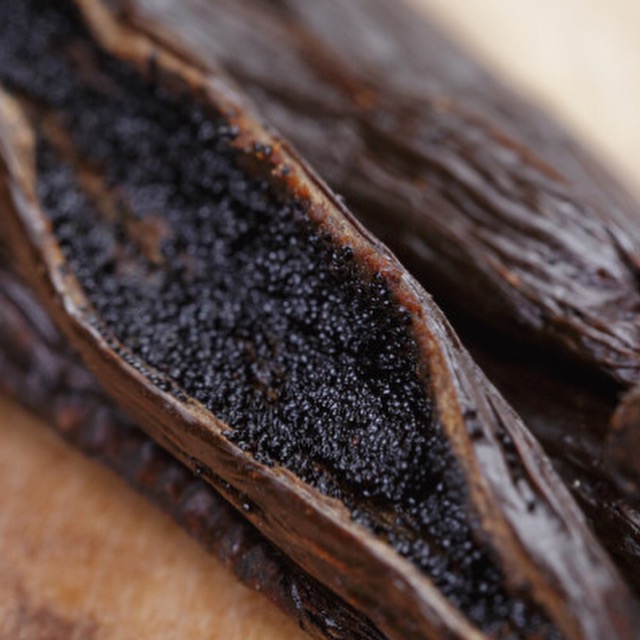
Vanilla is of course expensive but this reflects the labour that goes into its production, and, in my mind it is worth paying that little bit more for quality, ethical produce so I always buy FairTrade and organic produce. Remember ingredients matter.
Did you know you can easily make your own vanilla extract and vanilla paste at home? Yes it is still expensive but it is comparatively less so than buying it at the local shop and often better in flavour too. After all you decide how much vanilla to add to your ‘brew’ determining how strong the liquor becomes.
All you need for the extract is vanilla pods, vodka, a suitable container and time. I use an old sweet wine bottle that I've kept because I like the label and because I brought it home on my first trip to Rome but you could use a Kilner jar, bottle or even an old jam jar, cleaned well obviosuly. Sure this is not a quick fix but it is worth every impatient day spent waiting and inspecting the bottle. Perhaps you can make it and just leave it in the cupboard? Not me, I was on tenterhooks the first time I made it, taking glances at the bottle every time I entered the pantry, opening the bottle to take gentle sniffs to see how the intriguing mix was progressing. In all honesty I was skeptical, how could vanilla beans and vodka give you such great results? Worry not, it is amazing.
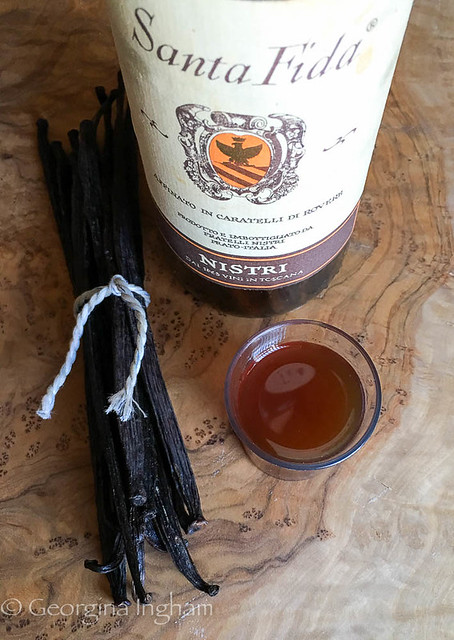
Remember, the longer you leave the magical elixir to steep the stronger, darker and thicker it will become. Oh and you don’t need to ‘use up’ a bottle and start again, just top up with vodka from time to time and if you’ve used a vanilla pod to scrape out the seeds or to flavour some vanilla sugar just pop the pod into the bottle and carry on.
I remove the pods from my vanilla extract and replace them with fresh ones around once every 12 months and make more vanilla paste with them. Like Hugh Fearnley Whittingstall I have a bit of a “War on Waste” going on in my kitchen too, if I can use up leftovers I will; “Waste not want not” as they say.
The vanilla bean paste requires a few more ingredients but it is quick and easy to prepare provided you have a food processor. I adore vanilla paste it is a bakers secret weapon, much more potent that vanilla extract and you get the added bonus of the speckles of vanilla beans but store bought kinds can include a lot of sugar and often added chemicals too.
Use your homemade extracts and pastes just as you would store bought and you get the peace of mind of knowing exactly where the ingredients came from and the satisfaction that you made a great pantry staple at home.

